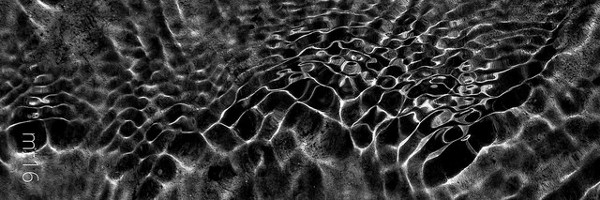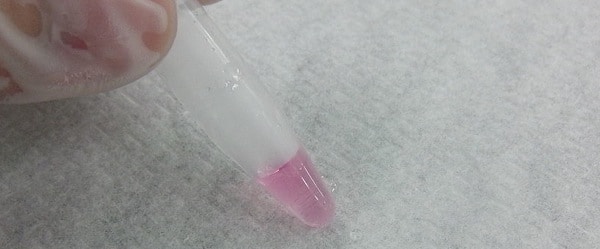Enzymes are special among proteins. It is not enough to detect them. You need to know their activity level. If you have devoted a substantial part of your research to studying proteases, like I did, you’ll know how crucial it is to choose an appropriate enzyme assay. There’s a heap of lab techniques out there for studying protease activity, but I have a personal favorite. It’s quick, it’s simple, it’s not costly, and (best of all) it’s suitable for all kinds of biological samples. Prepare for in-gel zymography!
The Basics of In-Gel Zymography
In-gel zymography is an SDS-PAGE based enzyme assay in which the protease is analyzed based on its ability to degrade its substrate. The proteins are electrophoretically separated on a running gel that incorporates the substrate copolymerized with acrylamide. Then, the enzymes are induced to hydrolyze the substrate in a dose dependent manner, and this reaction is visualized after staining the gel.
De- and Renaturation
During electrophoresis we typically denature proteins with sodium dodecyl sulfate (SDS) to nullify the effects of charge and structure on migration. SDS ensures that the proteins are separated only based on their mass. However, denatured enzymes do not have biological activity.
To restore activity, first incubate your gel in a non-ionic detergent like Triton X-100, which exchanges the SDS with the detergent. Then, incubate the gel at 37°C overnight in a convenient buffer that contains cofactors and all the other goodies an enzyme could wish for. Adapt the composition and the pH of the buffer to the protease in question. For instance, matrix metalloproteinases (MMPs) prefer a neutral to basic pH, while cysteine peptidases prefer an acidic pH.
At this point the enzyme will partially refold to an active conformation and digest the copolimerized substrate. The digested products are low-molecular weight proteins that are subsequently washed out of the gel. Next, stain the gel with Coomassie Blue. The gel will stain dark-blue, but the proteolytically cleaved sites will remain unstained.
Activation of Enzymes
Many proteases require an activation step before they start functioning. Some, like MMP-2 and MMP-9 autoactivate while refolding. Then there are those, like MMP-1 or MMP-13, which you need to activate by pretreating them with trypsin or 4-aminophenylmercuric-acetate (APMA).
Some extraction procedures may artificially activate or inactivate enzymes. Make sure you don’t add protease inhibitors to your extraction buffer. Additionally, if your enzyme needs a metal ion as a cofactor, avoid EDTA or other chelating agents.
What About The Samples?
You can analyze any kind of biological sample by in-gel zymography: cell and tissue extracts, conditioned media, serum, plasma, urine… you name it. As long as you adequately store and prepare them.
When preparing samples, use a non-reducing sample buffer. Reducing agents, like β-mercaptoethanol, break the disulphide bonds and prevent protein refolding. Boiling the samples is also a big no-no.
The Substrates
The list of substrates in use for zymography is still growing and includes gelatin, casein, albumin, fibrin collagen, and laminin. Some substrates may cause more trouble than others. For example, low molecular weight substrates like casein can migrate along with the proteins. The upper part of the gel will then gradually run out of a substrate, while the lower part will have an excess. This is a big problem if the enzyme is on the substrate-migration boundary. If this is your case, you should try pre-running the gel.
So How Do We Interpret the Results?
To assess the molecular size of bands, compare them with pre-stained standard proteins or with purified proteases. A good way to confirm the identity of your bands is to perform an inhibition assay in which you simply incubate control gels with selective inhibitors.
To quantify the results, scan the gels and measure the lytic zones by densitometry. There is a number of image analysis software available that can measure the optical density of the bands and the background as well as the volume of the bands. After you subtract the density of the background from each band, express the results in units of pixel intensity per mm2.
But here we come to a shaky area. Without an appropriate loading control or a standard curve, these measurements are only good for a relative comparison between samples on a single gel. Unfortunately, you can’t run a full standard cure and a sufficient number of samples on the same gel.
What Does Zymography Tell Us? And What Does Zymography NOT Tell Us?
Many proteases are synthesized as inactive precursors and activated upon proteolytic removal of the propeptide. If this is the case, the proform and the active form of the enzyme have different molecular masses and can be visualized in the same sample. This is a huge advantage, because most immunological techniques do not distinguish between the zymogen and the active enzyme.
Another advantage worth mentioning is that you can detect all the proteases with the same substrate affinity in a single sample.
On the other hand, during electrophoresis, the proteases are disassociated from their inhibitors they were previously in contact with. In-gel zymography is, therefore, not able to discriminate between proteases that were free and those that were inhibited prior to the experiment.
And to Conclude…
Zymography is a handy tool, but its results should be interpreted with caution. It is a very sensitive technique if you need qualitative data about enzymatic activity. The quantification by densitometry is appropriate for the relative comparison between samples. In any case, it is a good idea to verify the results by Western blot.
So, roll up your sleeves and check if your enzyme is busy!






